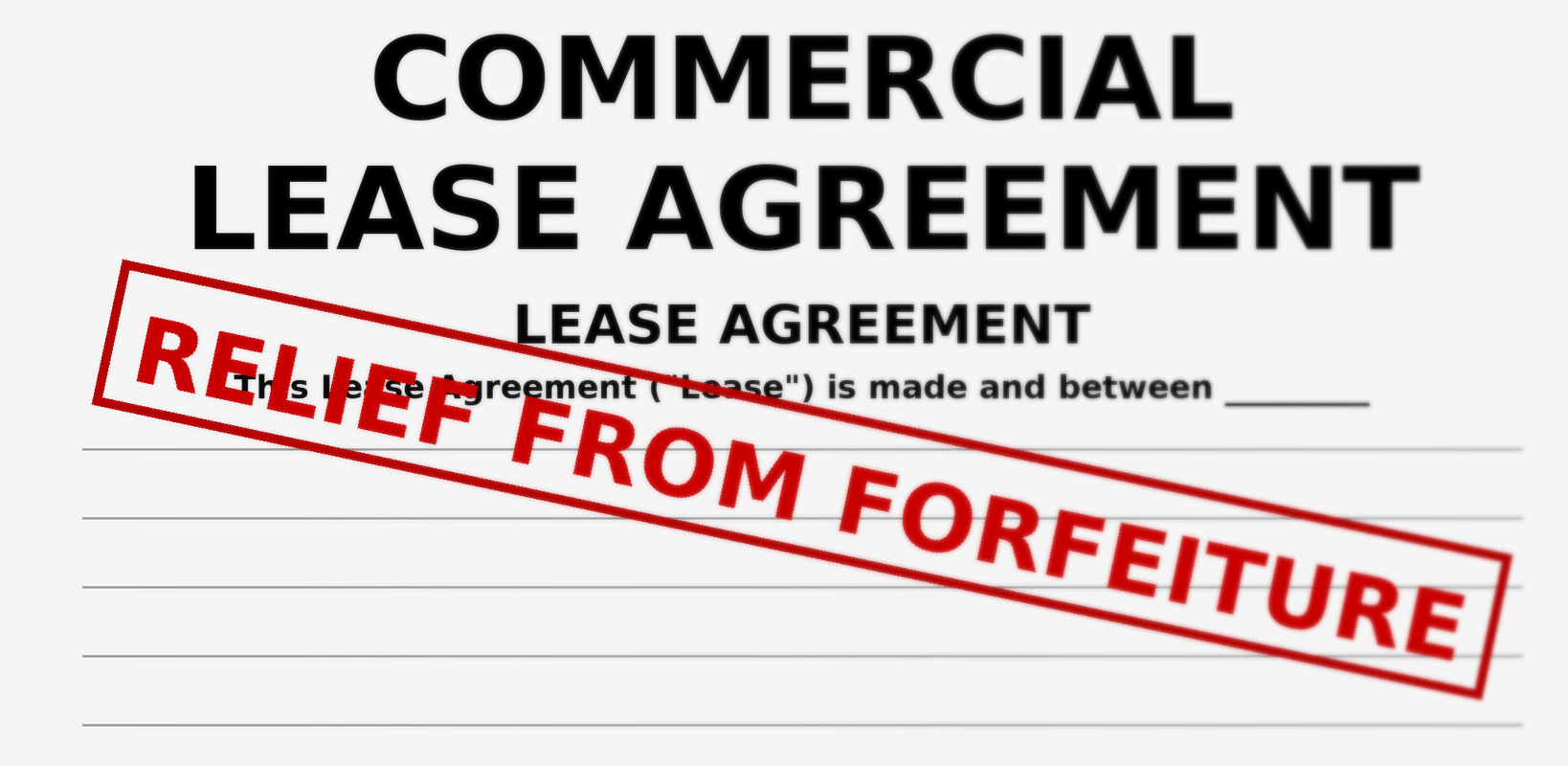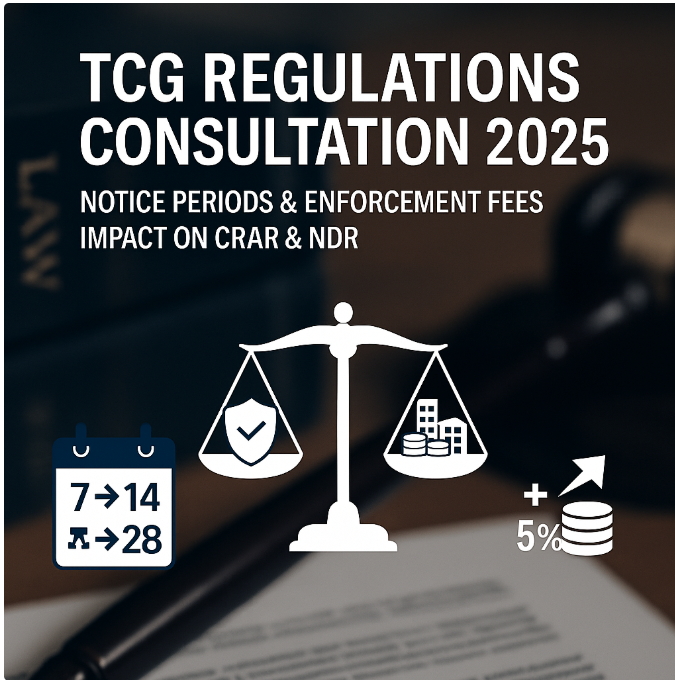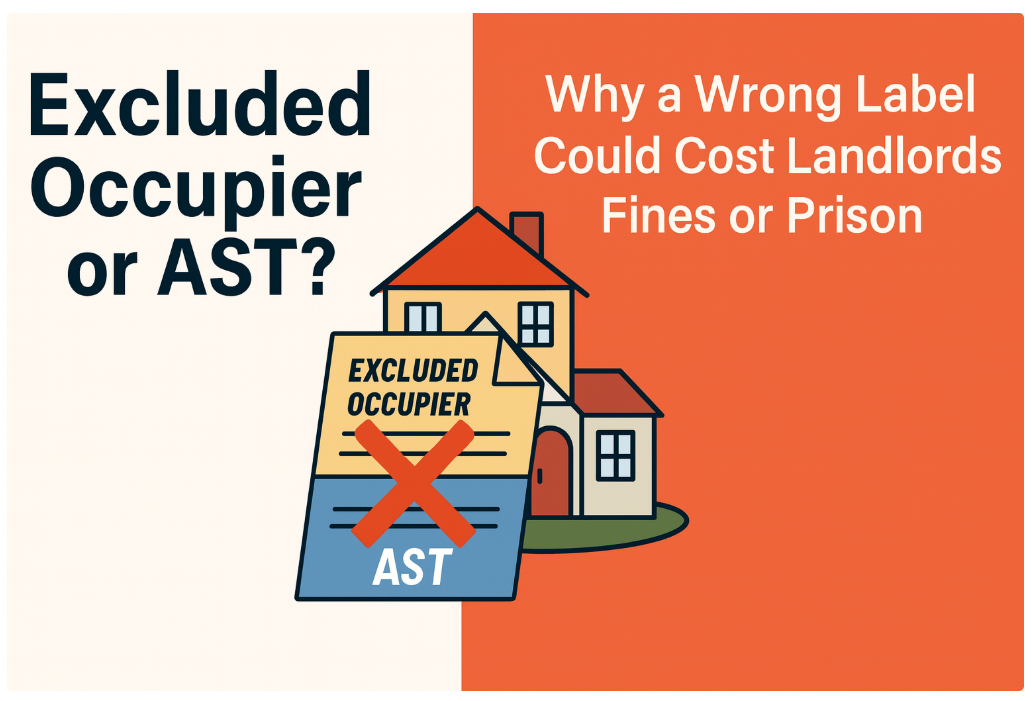NEWS and Updates
📌 Legal Insight: Understanding Relief from Forfeiture

When a lease is lawfully forfeited due to non-payment of rent or breach of covenant, tenants may still seek Relief from Forfeiture. This equitable remedy, granted at the court’s discretion, can reinstate a lease if certain conditions are met. For landlords, understanding these rules — and their limits — is crucial to effective enforcement.
🔎 What is Relief from Forfeiture?
- Common law and statutory safeguard: Relief enables tenants to apply to court for reinstatement even after forfeiture, particularly for arrears of rent.
- Scope: Relief is generally available where the breach is remediable, such as non-payment of rent or failure to repair. However, some breaches — such as illegal use of premises — are considered irremediable and relief will not usually be granted (Scala House & District Property Co Ltd v Forbes [1974] QB 575).
- Equitable discretion: Courts exercise equitable jurisdiction, granting relief where arrears are paid in full or breaches remedied promptly, provided no significant prejudice to the landlord remains.
⚖️ Key Legal Criteria
- Type of breach – Rent arrears are usually remediable; unlawful use or serious damage may not be.
- Promptness – Applications must be made quickly. For rent arrears, section 138(3) County Courts Act 1984 imposes a six-month time limit in county court proceedings. Equitable relief in the High Court may be considered sooner.
- Court conditions – Relief usually requires full payment of arrears, interest, and the landlord’s legal costs, plus covenant compliance going forward.
- Landlord’s right to oppose – Opposition is strongest where landlords can demonstrate repeated breaches, significant financial loss, or prejudice such as damage to property or loss of value.
📂 Case Examples
Case Example 1: Non-Payment of Rent (No Section 146 Notice Required)
A tenant fails to pay rent for six months. Provided the lease contains a valid forfeiture clause, the landlord may instruct bailiffs or other authorised agents to effect peaceable re-entry, or alternatively apply to court for possession.
If the tenant applies for relief, the court will usually grant it if arrears, interest, and costs are paid within six months of forfeiture, as required by section 138(3) County Courts Act 1984 for county court claims. Relief is less likely where persistent default causes clear landlord prejudice.
Case Example 2: Breach of Covenant (Section 146 Notice Required)
A tenant breaches a repairing covenant. Here, the landlord must serve a Section 146 notice setting out the breach and allowing time to remedy it before forfeiting. In residential leases, the Leasehold Property (Repairs) Act 1938 may also require the landlord to obtain court or tribunal consent for disrepair claims.
If the tenant seeks relief, courts weigh whether the breach has been remedied or can be remedied. Where disrepair or misuse is serious, relief may be refused.
🛡️ Drafting Leases to Reduce Relief Risks
While courts cannot be ousted from granting relief, careful drafting makes relief harder to secure.
- Broaden the definition of rent: Reserve not only annual rent but also service charges, insurance rent, and other sums as rent. This enables forfeiture without a Section 146 notice in commercial leases. However, clauses must be clear and unambiguous (Escalus Properties Ltd v Robinson [1995] QB 231).
- Tight grace periods: Shorten rent grace periods (e.g. 14 days) to reduce tenant flexibility.
- Persistent breach wording: Allow forfeiture for repeated breaches, even if remedied, though courts retain discretion to grant relief if prejudice is absent.
- Recover costs: Ensure the lease allows recovery of enforcement and legal costs on an indemnity basis.
- Time is of the essence: State expressly that punctual payment of rent is a fundamental obligation.
⚖️ Fact Check: Forfeiture for Service Charge & Insurance Arrears
- General rule: Section 146 Law of Property Act 1925 requires notice for all breaches except non-payment of rent.
- Defining rent: If service charges or insurance sums are reserved as rent, they may fall within the rent exception in commercial leases.
- Case law:
- Van Haarlam v Kasner [1992] – service charges not reserved as rent required notice.
- Freeholders of 69 Marina v Oram [2011] EWCA Civ 1258 – the Court of Appeal held that in residential leases, statutory protections (e.g. s.81 Housing Act 1996) still required determination before forfeiture, even where service charges were reserved as rent.
- Residential leases: Additional protections include:
- s.81 Housing Act 1996 – arrears must be admitted or determined before enforcement.
- Leasehold Property (Repairs) Act 1938 – court/tribunal consent for disrepair claims.
- s.168 Commonhold and Leasehold Reform Act 2002 – tribunal determination required for certain breaches.
- Protection from Eviction Act 1977 – unlawful to use peaceable re-entry against residential tenants in occupation without a court order.
📦 Drafting Toolkit: Rent & Forfeiture Clauses
Model Rent Clause
The Tenant covenants with the Landlord to pay:
- Annual Rent – the yearly rent of £[amount], payable by equal monthly instalments in advance on the [date] of each month.
- Insurance Rent – all premiums and other monies payable by the Landlord for insuring the Premises and the Building under this Lease.
- Service Charge Rent – the Tenant’s proportion of the Service Charge payable under this Lease.
- Additional Sums – all interest, costs, expenses, and any other monies payable by the Tenant under this Lease.
All of the above payments are reserved as rent and shall be recoverable as rent in arrear.
Model Forfeiture Clause
If:
- any rent (as defined in this Lease) is unpaid for 14 days after becoming due, whether formally demanded or not; or
- the Tenant commits any other breach of covenant contained in this Lease and, where required, the Landlord has served a Section 146 notice under the Law of Property Act 1925 and the Tenant has failed to remedy the breach within a reasonable time; or
- the Tenant enters into insolvency, liquidation, administration, or an arrangement with its creditors,
then the Landlord may effect peaceable re-entry or apply to court for possession, and the Term shall absolutely cease without prejudice to any rights or remedies that may have accrued.
⚠️ Drafting Notes
- In commercial leases, these clauses can enable faster forfeiture for arrears of service charge or insurance rent if reserved as rent.
- In residential leases, statutory protections (Housing Act 1996, Leasehold Property (Repairs) Act 1938, Commonhold and Leasehold Reform Act 2002, Protection from Eviction Act 1977) limit or prevent such enforcement without notice or tribunal/court proceedings.
- Courts retain discretion to grant Relief from Forfeiture even where clauses are valid, especially if the tenant remedies breaches promptly.
✅ Practical Guidance for Landlords
- Review leases to confirm whether charges are reserved as rent.
- Remember that residential leases require tribunal determinations under s.168 CLRA 2002 before forfeiture.
- Document arrears and breaches fully to evidence landlord prejudice.
- Always seek specialist advice before enforcing forfeiture.
- Be mindful of statutory restrictions: peaceable re-entry is not lawful in residential occupation cases without a possession order.
⏳ Relief from Forfeiture: Time Limits
1. Non-Payment of Rent
- Governed by section 138(3) County Courts Act 1984 when proceedings are in the county court.
- A tenant has up to six months from the date of forfeiture to apply for relief.
- In the High Court, the six-month limit does not strictly apply, but courts usually follow similar principles, exercising equitable discretion.
2. Other Breaches of Covenant (e.g. disrepair)
- No fixed statutory time limit — it is an equitable remedy (ie up to the Courts discretion)
- The tenant must apply promptly; delay is a key factor. Courts weigh prejudice to the landlord, seriousness of the breach, and whether it has been remedied.
- Case law:
- Billson v Residential Apartments Ltd [1992] 1 AC 494 — established that relief can be granted even after peaceable re-entry for breaches other than rent, provided application is made promptly.
- “Promptly” is fact-specific — weeks or a few months might be acceptable; years would almost certainly fail.
3. Residential Lease Protections
- Certain statutory safeguards (e.g. s.168 Commonhold and Leasehold Reform Act 2002) require tribunal determination before forfeiture for many breaches.
- In practice, this can delay the point at which forfeiture is “complete,” which also affects when the tenant must act.
✅ Quick Summary
- Rent arrears: 6 months (s.138 CCA 1984).
- Other breaches: No statutory limit, but must act promptly — courts look closely at delay and prejudice.
- Residential leases: Additional tribunal/court procedures apply before forfeiture can even be effective.
⚖️ Bottom Line
Relief from Forfeiture balances landlord rights with tenant protections. Careful lease drafting strengthens landlords’ hands, particularly in commercial leases, but courts will always retain discretion to grant relief where tenants remedy breaches promptly.
👉 Before relying on forfeiture clauses, landlords should consult a qualified property law solicitor to ensure compliance with statutory protections and avoid costly mistakes.






